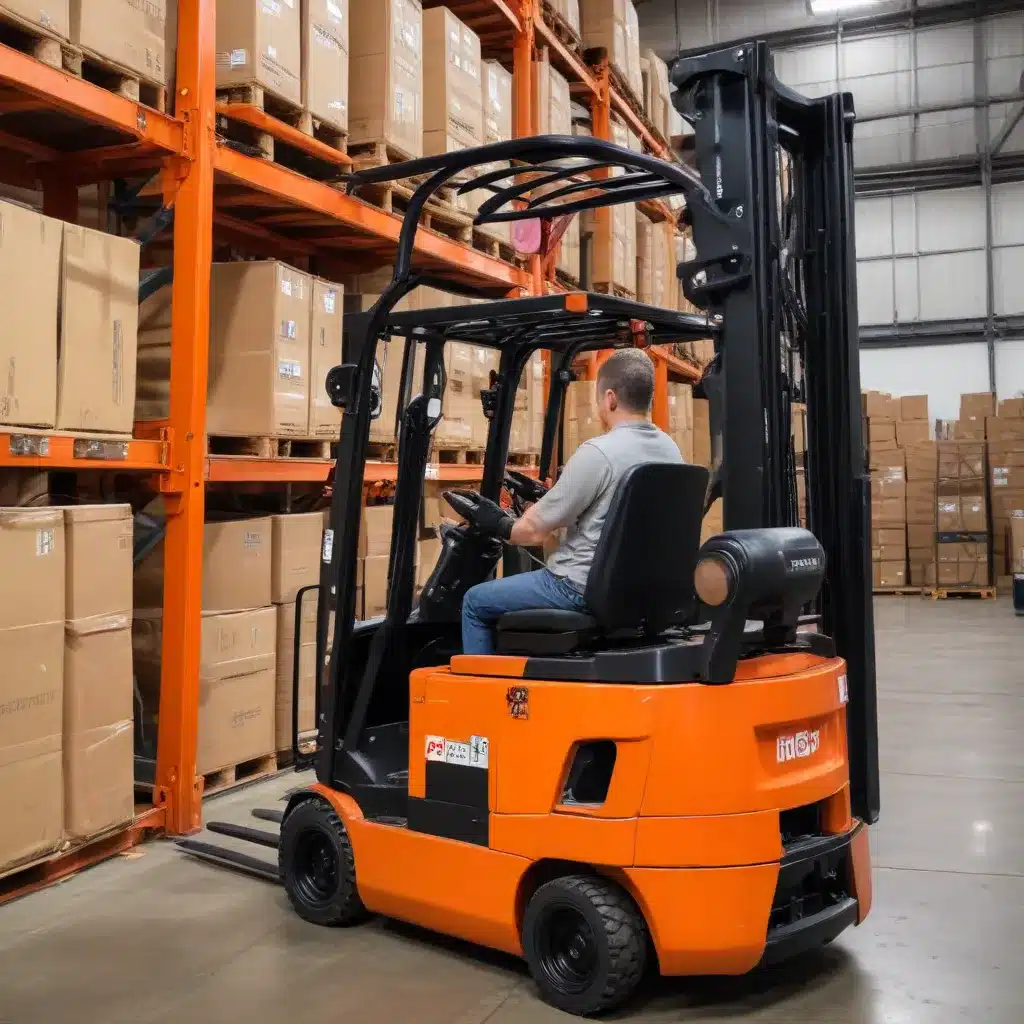
The Importance of Forklift Ergonomics
As a seasoned industry expert, I understand the crucial role that forklift ergonomics play in ensuring the long-term health and productivity of forklift operators. Forklift operators often spend hours on end seated in the same position, with the added strain of bending, twisting, and absorbing the impact of bumps and jolts throughout the day. This repetitive stress can lead to a range of musculoskeletal issues, such as back and neck problems, if the forklift’s ergonomic design is not optimized.
Manufacturers have made significant strides in improving forklift ergonomics over the years, with features like adjustable seats, swiveling controls, and tilting steering columns becoming increasingly common. These enhancements are designed to reduce operator fatigue and prevent injuries, ultimately enhancing overall productivity and safety.
However, the responsibility for operator health and comfort does not solely lie with the manufacturers. Employers and forklift operators themselves must also take an active role in prioritizing ergonomics and implementing best practices. By working together, we can create a work environment that not only maximizes efficiency but also prioritizes the well-being of the individuals operating these crucial pieces of equipment.
Ergonomic Forklift Accessories to Enhance Operator Comfort
One of the most effective ways to improve forklift ergonomics is through the use of specialized accessories designed to enhance operator comfort and support. These accessories can make a significant difference in reducing the strain and stress placed on the operator’s body, ultimately leading to improved long-term health and productivity.
Adjustable Seating
Perhaps the most important ergonomic feature of a forklift is the operator’s seat. Adjustable seats that can swivel, slide, and recline allow the operator to find the most comfortable and supportive position, reducing the risk of back pain and other musculoskeletal issues. Many modern forklift models come equipped with these adjustable seating options, but for older or less-equipped forklifts, aftermarket seat upgrades can be a worthwhile investment.
Ergonomic Seatbelts
Seatbelts are a critical safety feature, but traditional forklift seatbelts can often be cumbersome and uncomfortable for operators. Ergonomic seatbelt designs, such as the SAFE Belt from Forklift Training Systems, feature a more flexible, arc-shaped design that improves operator comfort and flexibility without compromising safety. These seatbelts are also designed to be more visible, encouraging consistent usage and compliance.
Hydraulic Controls and Mini-Levers
Forklift operators often need to perform repetitive motions when controlling the lift, tilt, and other functions of the forklift. Ergonomic controls, such as seat-side hydraulic controls or mini-levers, can reduce the strain on the operator’s hands, wrists, and arms, preventing the development of repetitive strain injuries over time.
Rear Assist Grips
Reverse driving can be particularly stressful on the operator’s neck and back, as they must constantly turn to monitor their surroundings. Rear assist grips, with integrated horn buttons, allow the operator to maintain a more neutral posture while still having access to essential controls.
Tilting Steering Columns
Traditional steering columns can force the operator to adopt an awkward, hunched-over posture, especially during long shifts. Tilting steering columns enable the operator to adjust the column to a more ergonomic angle, reducing strain on the neck, shoulders, and back.
Operator-Driven Ergonomic Practices
While manufacturers and employers play a crucial role in incorporating ergonomic features and accessories, forklift operators themselves can also take proactive steps to enhance their comfort and well-being.
Regular Stretching and Movement
Spending extended periods seated in a forklift can lead to muscle stiffness and fatigue. Encouraging forklift operators to take regular breaks and perform simple stretching exercises can help mitigate these issues and keep their bodies more limber throughout the workday.
Proper Lifting Techniques
When loading and unloading materials, forklift operators should be trained in proper lifting techniques to avoid straining their backs. This includes keeping the load close to the body, maintaining a straight back, and using the leg muscles rather than the back to lift.
Awareness of Forklift Limitations
Operators should be mindful of the forklift’s capabilities and avoid attempting to lift or maneuver loads that exceed the equipment’s safe working limits. Overloading or improper handling can lead to tip-overs and other accidents that put the operator’s health at risk.
Prioritizing Forklift Ergonomics for Long-Term Success
By prioritizing forklift ergonomics, both employers and operators can create a work environment that promotes long-term health, safety, and productivity. Manufacturers continue to innovate and develop new ergonomic features, while employers must ensure that their forklift fleets are equipped with the necessary accessories and that operators are trained in proper usage and maintenance.
Ultimately, the investment in forklift ergonomics pays dividends in the form of reduced worker’s compensation claims, decreased absenteeism, and improved employee morale and retention. As an industry expert, I encourage all forklift-reliant businesses to closely examine their current practices and explore ways to optimize the ergonomics of their forklift operations. By doing so, they can safeguard the well-being of their most valuable assets – their employees – while also enhancing the overall efficiency and profitability of their operations.
For more information on forklift reviews, safety guidelines, maintenance tips, and industry trends, I invite you to explore the resources available on Forklift Reviews. Our team of experts is dedicated to providing comprehensive, authoritative, and up-to-date information to help businesses navigate the ever-evolving world of material handling and logistics.
Key Takeaways
- Forklift ergonomics play a crucial role in safeguarding the long-term health and productivity of forklift operators.
- Manufacturers have made significant advancements in improving forklift ergonomics, with features like adjustable seating, ergonomic seatbelts, and intuitive controls.
- Employers and operators must work together to prioritize ergonomics and implement best practices to enhance operator comfort and well-being.
- Ergonomic accessories, such as adjustable seats, seatbelts, and steering columns, can make a significant difference in reducing operator strain and stress.
- Operators can also take proactive steps, like regular stretching and proper lifting techniques, to maintain their health and comfort while on the job.
- Investing in forklift ergonomics benefits both the employer and the operator, leading to reduced injuries, increased productivity, and improved employee morale and retention.

